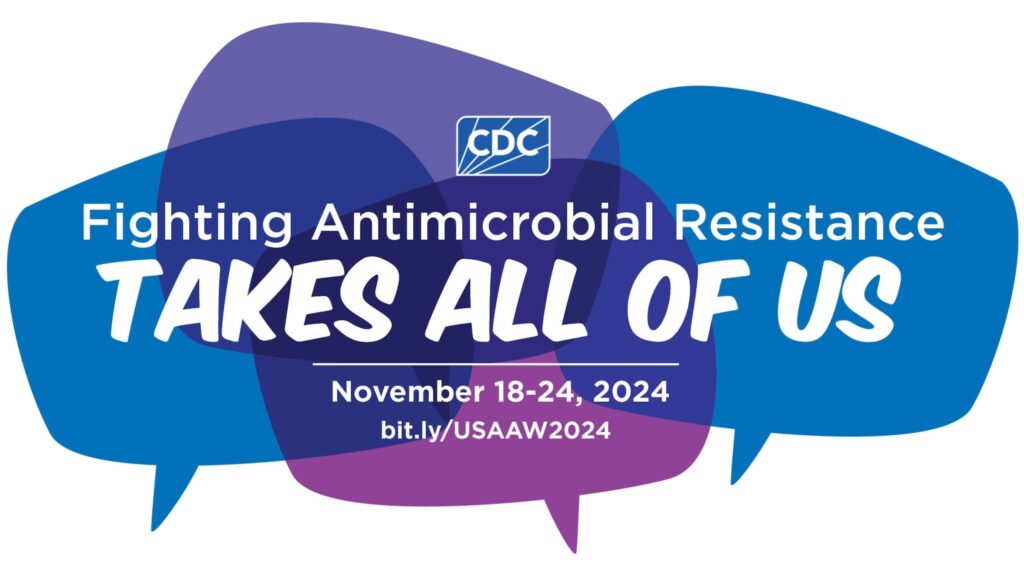
This week is U.S. Antibiotic Awareness Week (USAAW), which serves to raise awareness of the importance of appropriate antibiotic and antifungal use and the threat antimicrobial resistance poses to people, animals, plants, and their shared environment.
This year, the week’s theme is ‘Fighting Antimicrobial Resistance Takes All of Us.’ The CDC explains:
“Antimicrobial resistance happens when germs, like bacteria and fungi, develop the ability to defeat the drugs designed to kill them. That means the germs are not killed and continue to grow. Antimicrobial resistance is an urgent global public health threat that is estimated to cause more than 1.27 million deaths around the world and nearly 35,000 deaths in the United States each year. When Clostridioides difficile (C. diff) is added to the annual U.S. death toll for all antimicrobial resistance threats, the number jumps to 48,000 deaths. Antimicrobial resistance can affect anyone, anywhere, and at any stage of life. Antimicrobial-resistant germs can spread rapidly across the globe in and between healthcare facilities, as well as in the community, environment, and our food supply.
Preventing infections in the first place is our first line of defense against antimicrobial resistance. Access to clean water and adequate sanitation, vaccination coverage, and access to quality health care can prevent infections and the spread of antimicrobial resistance worldwide. Improving appropriate antibiotic and antifungal use is also critical. Appropriate use of antibiotic and antifungal drugs helps improve patient outcomes by optimizing the treatment of infections, avoiding drug-related side effects, and slowing the development of antimicrobial resistance.”
In recognition of this week, we have a series of posts planned on antimicrobial stewardship and UNMC efforts to help combat resistance. This is an incredibly important topic, and as an ID Division, we are at the front line of this mounting threat. Keep an eye on the blog for the rest of the week for seminars, UNMC ID research, and write-ups to learn more about what can be done to slow the development of antimicrobial resistance.